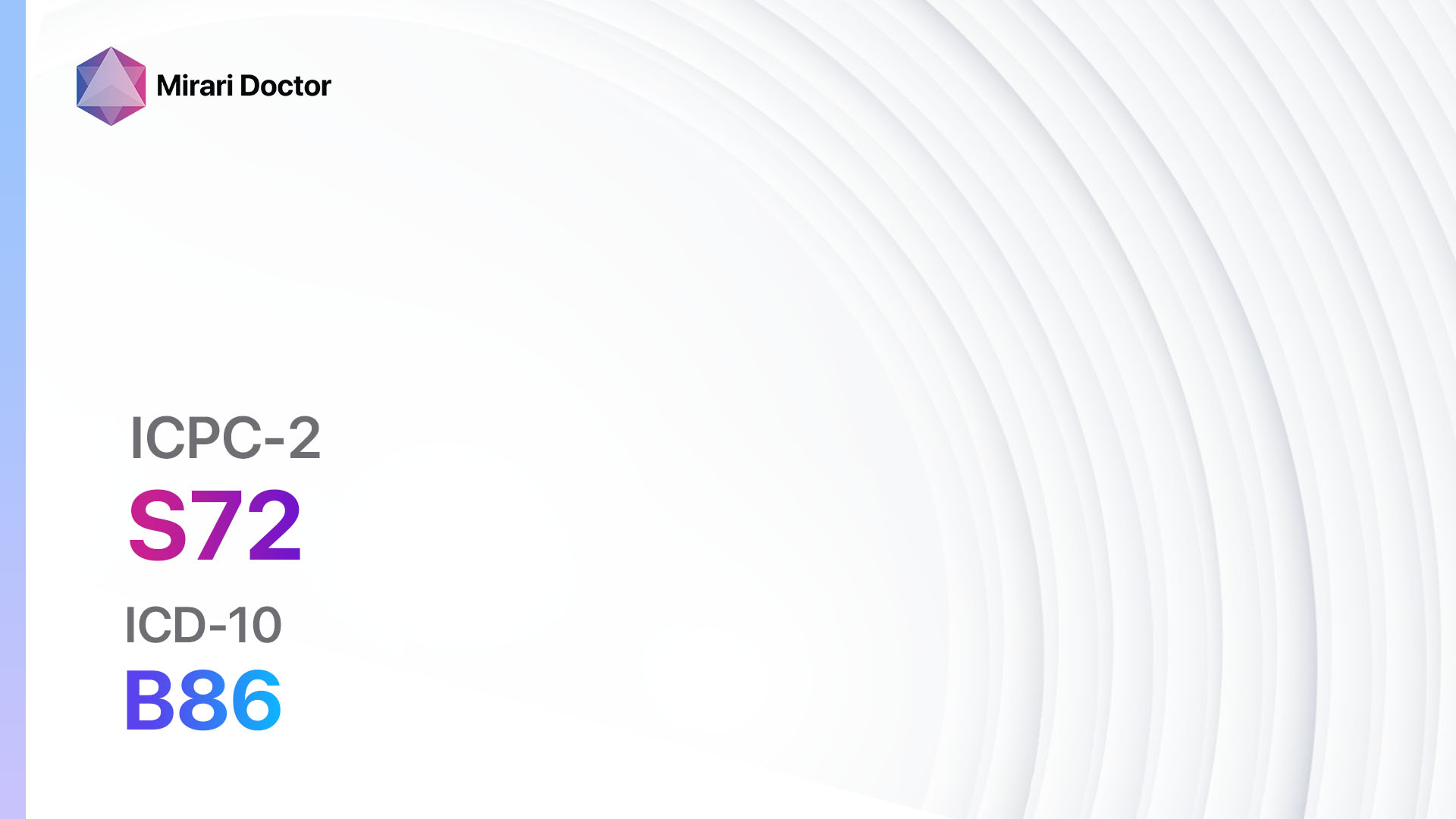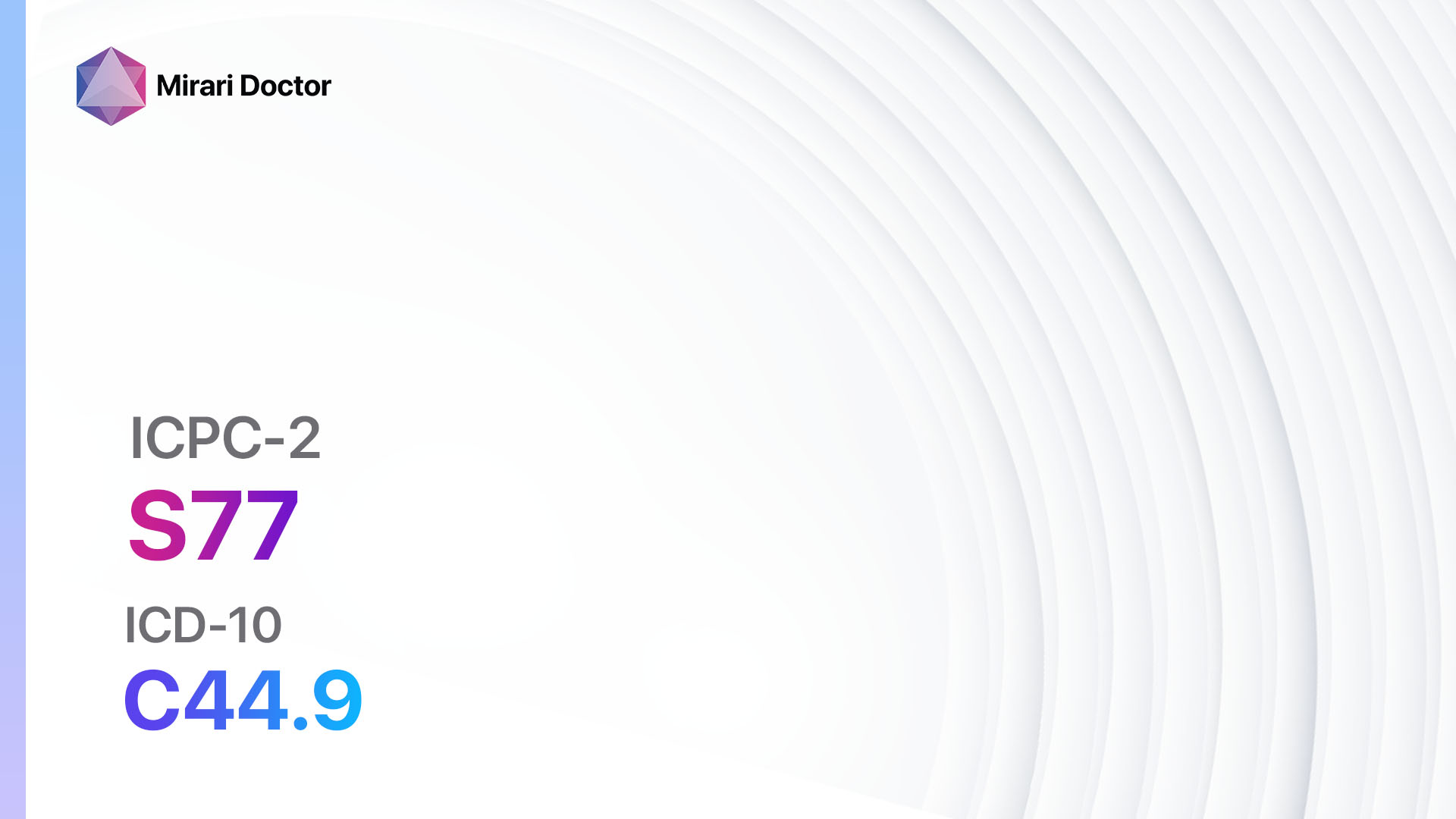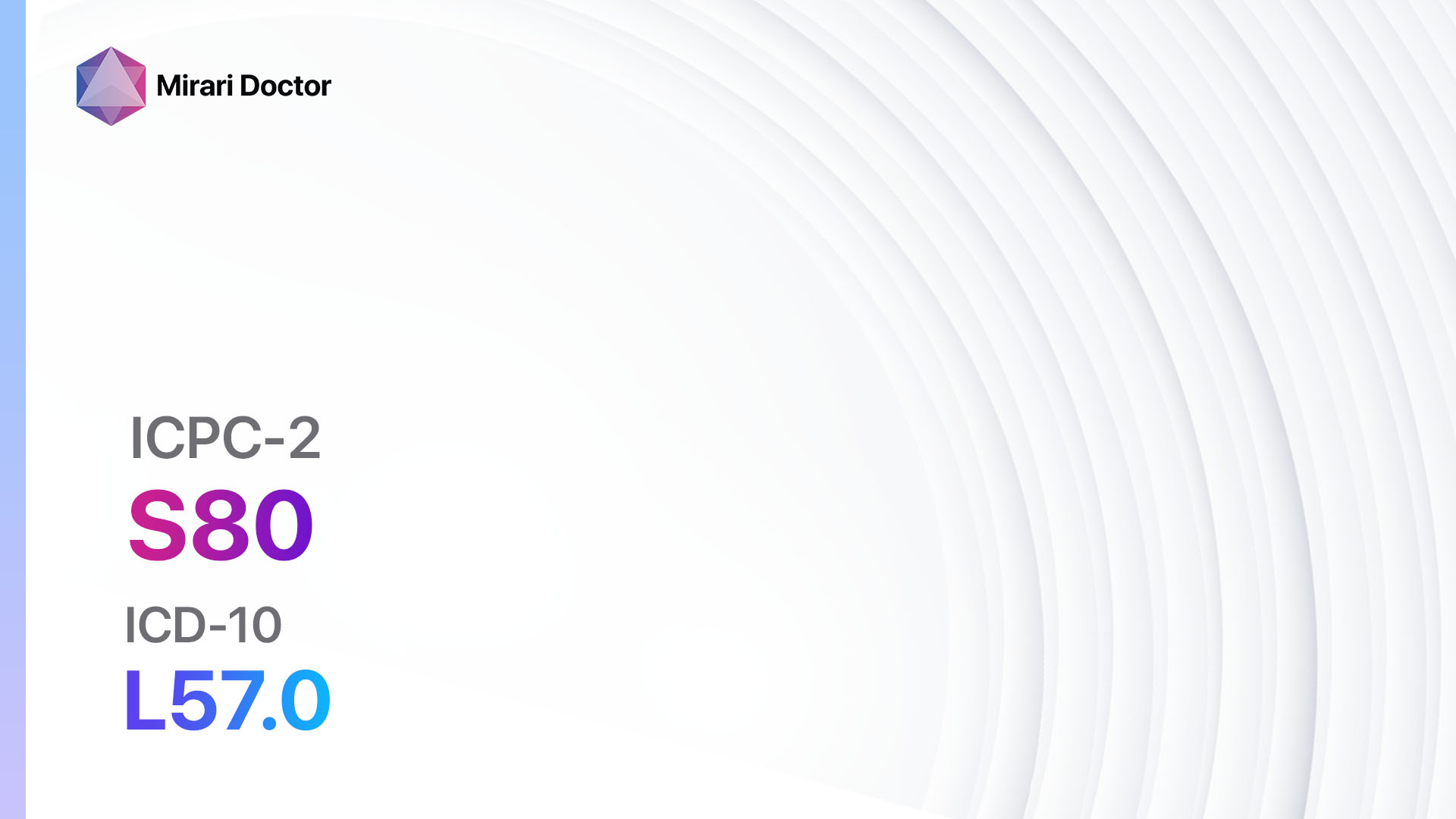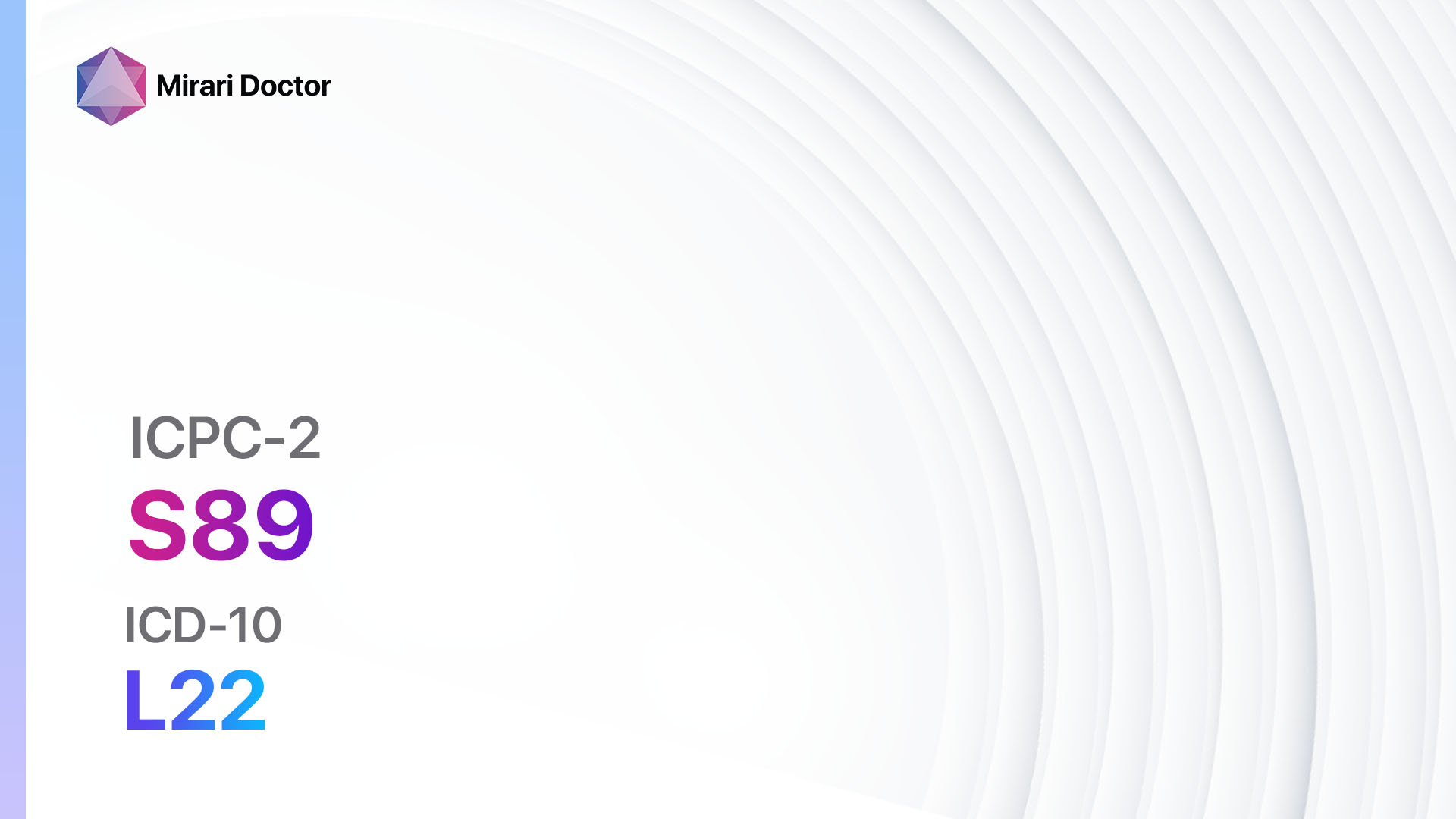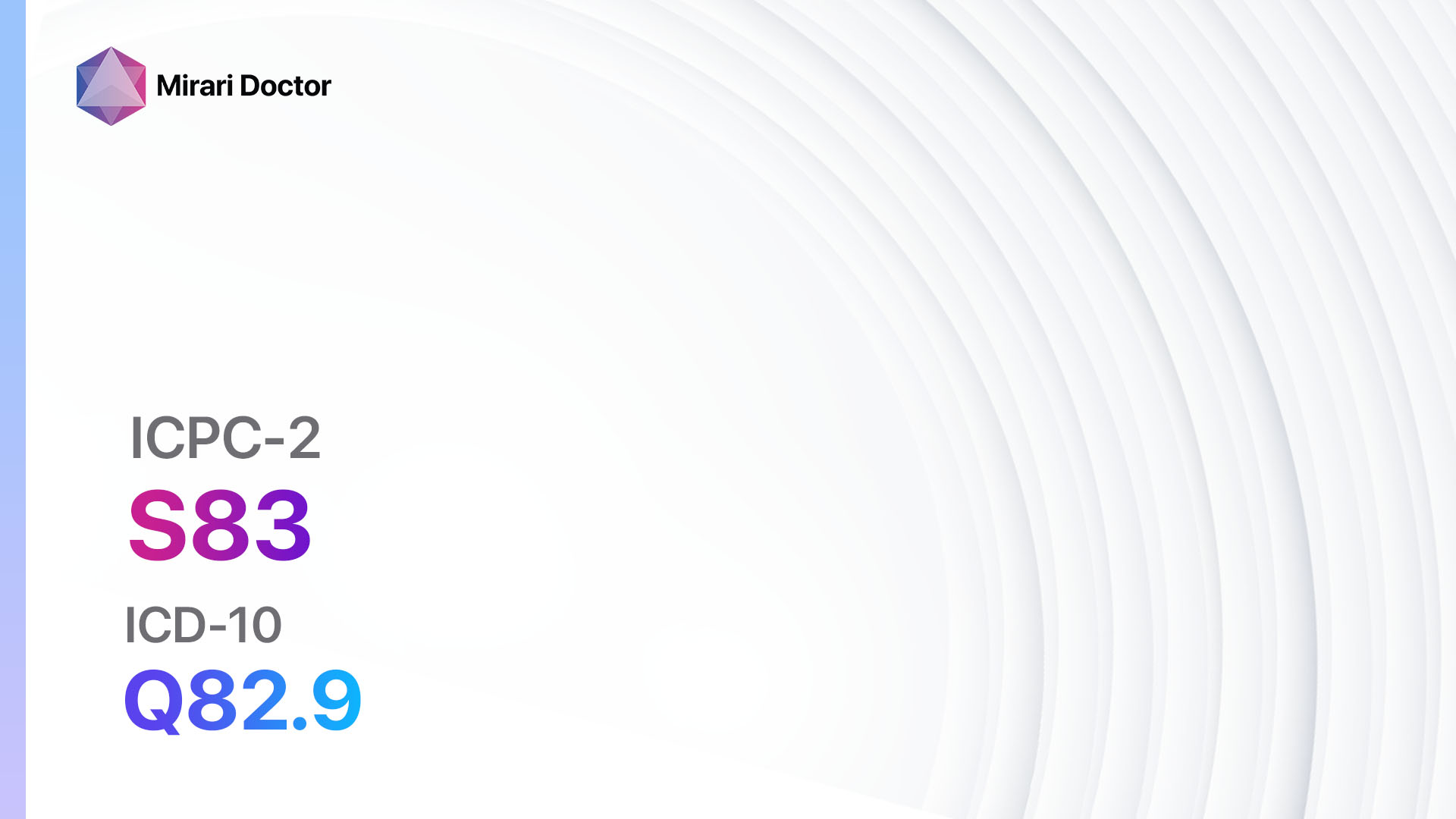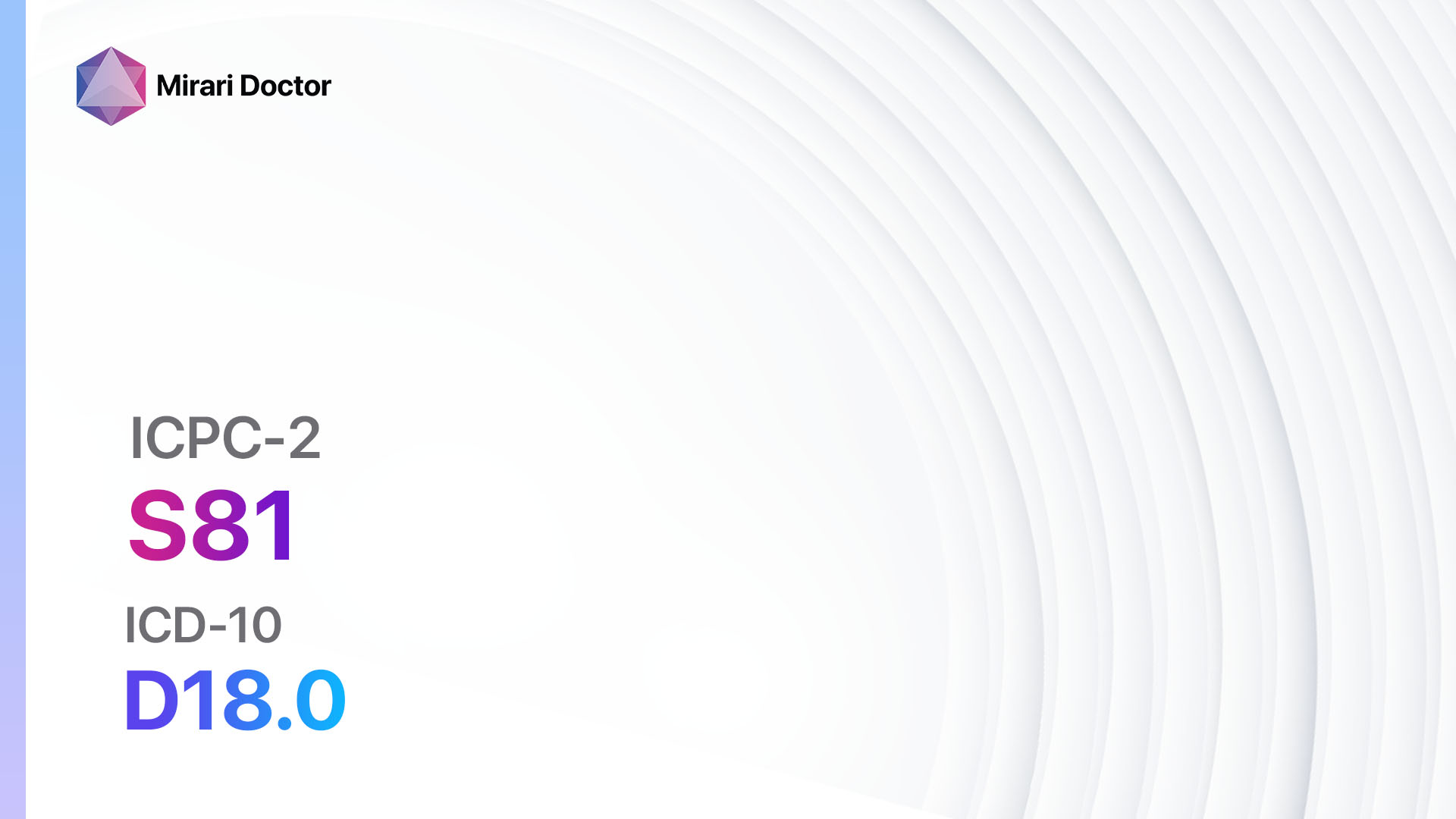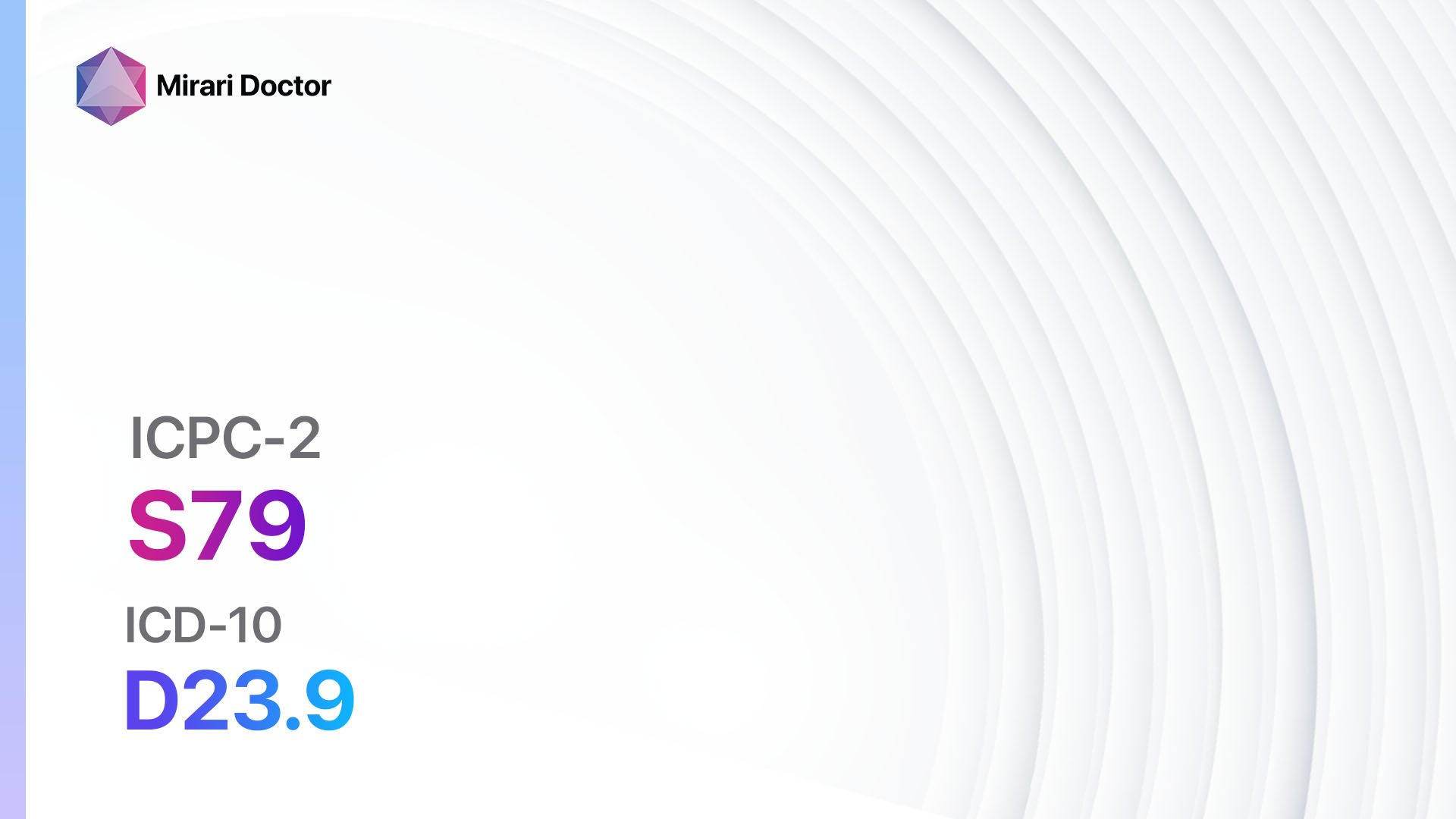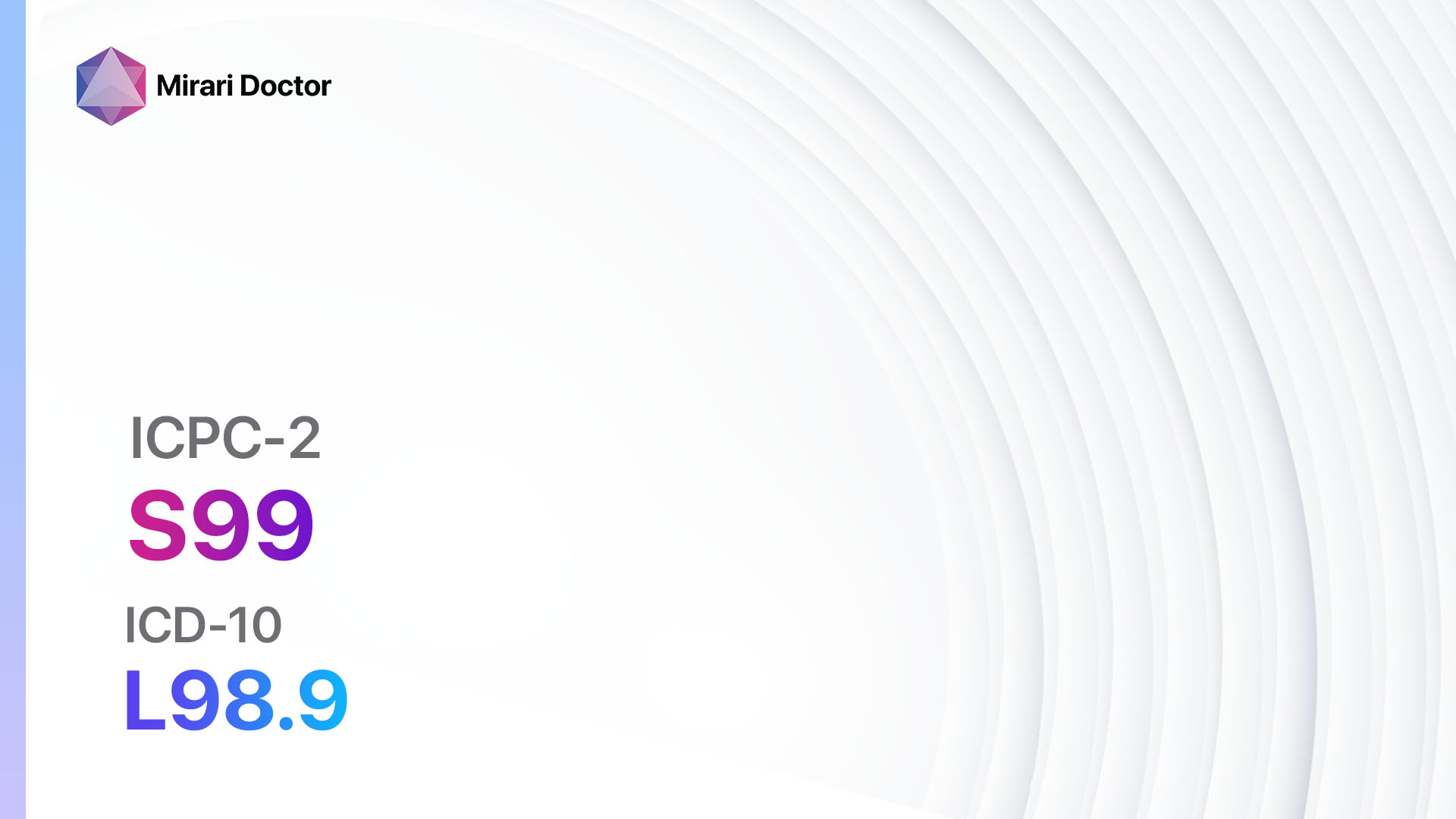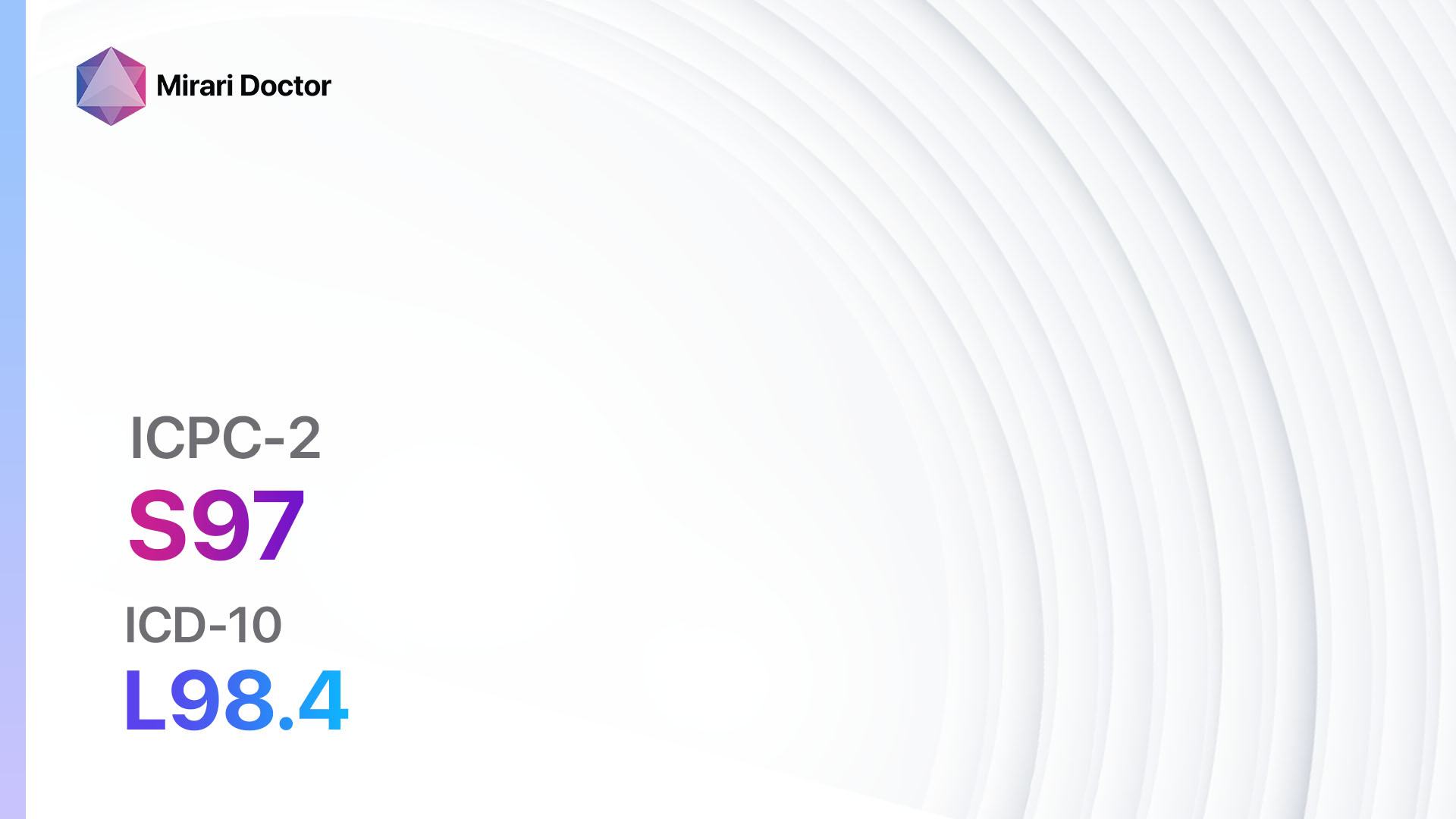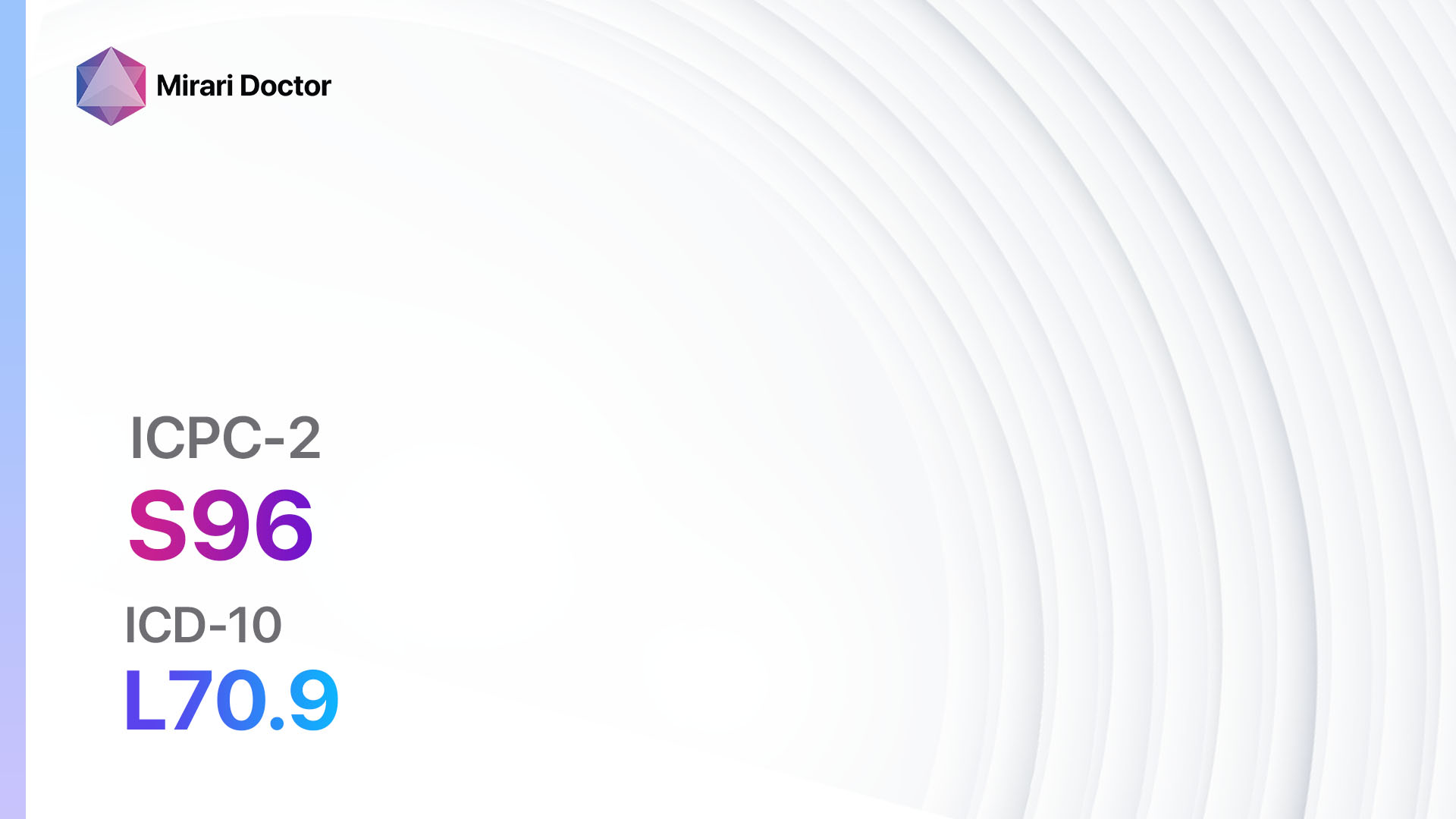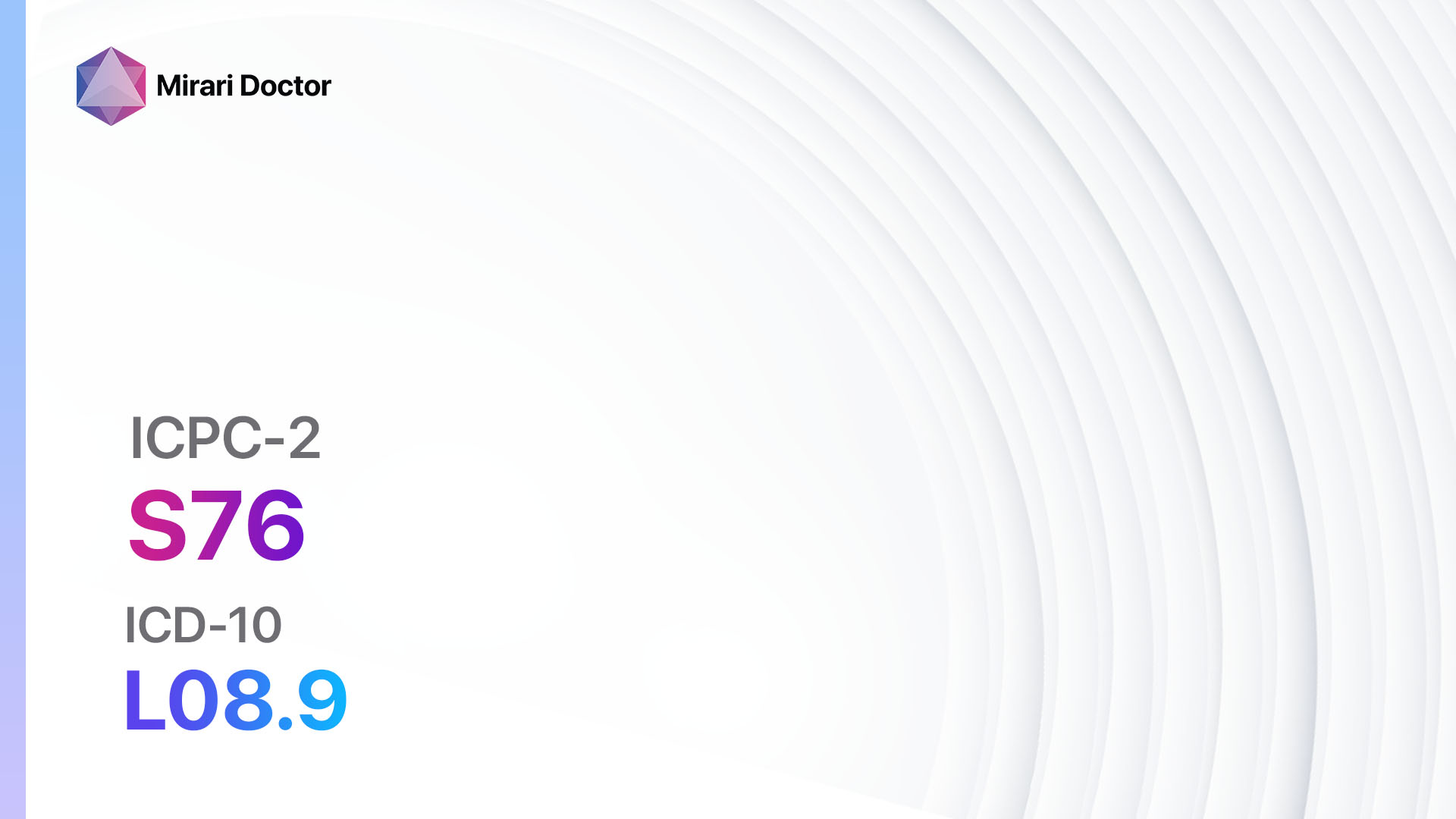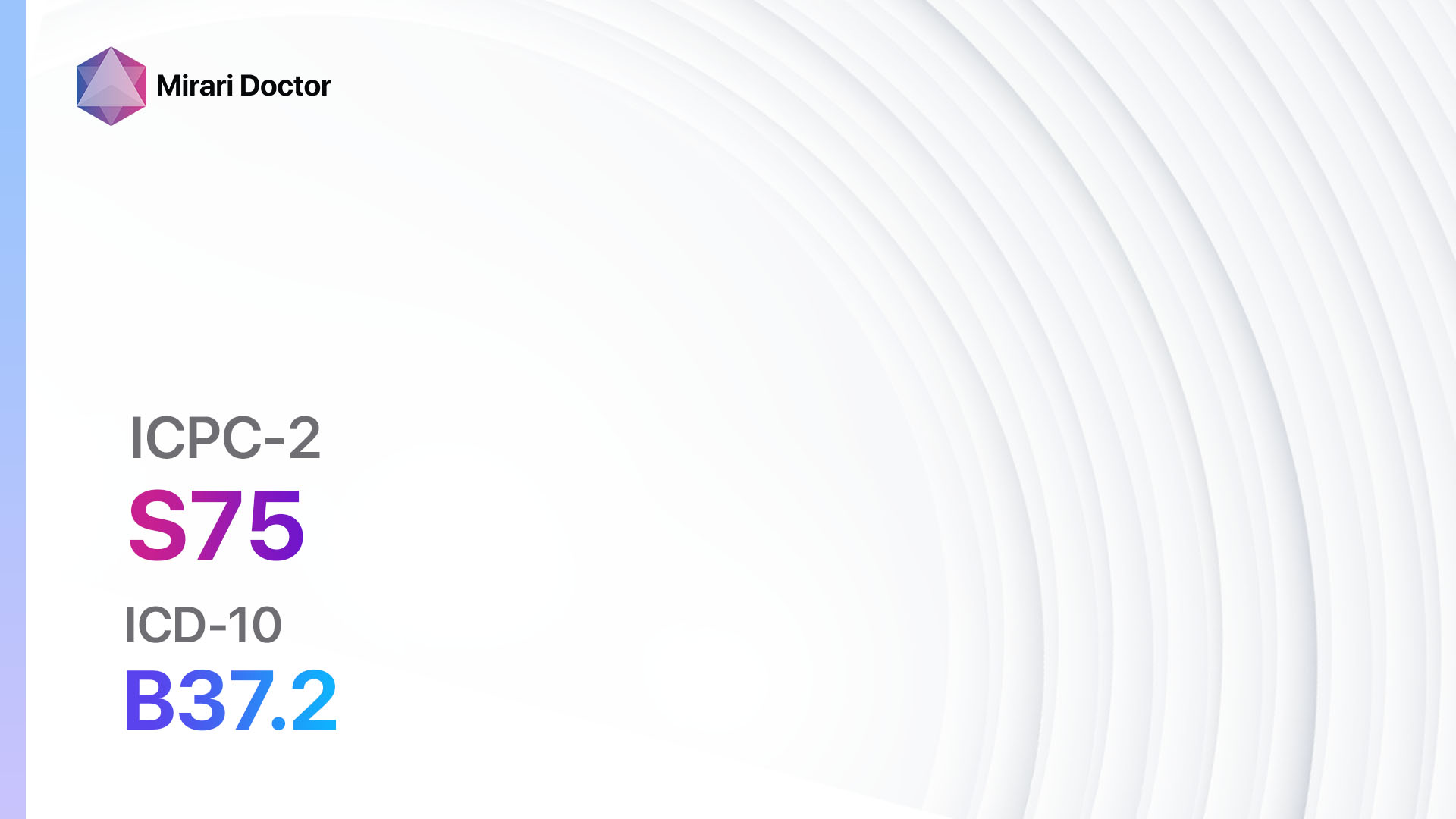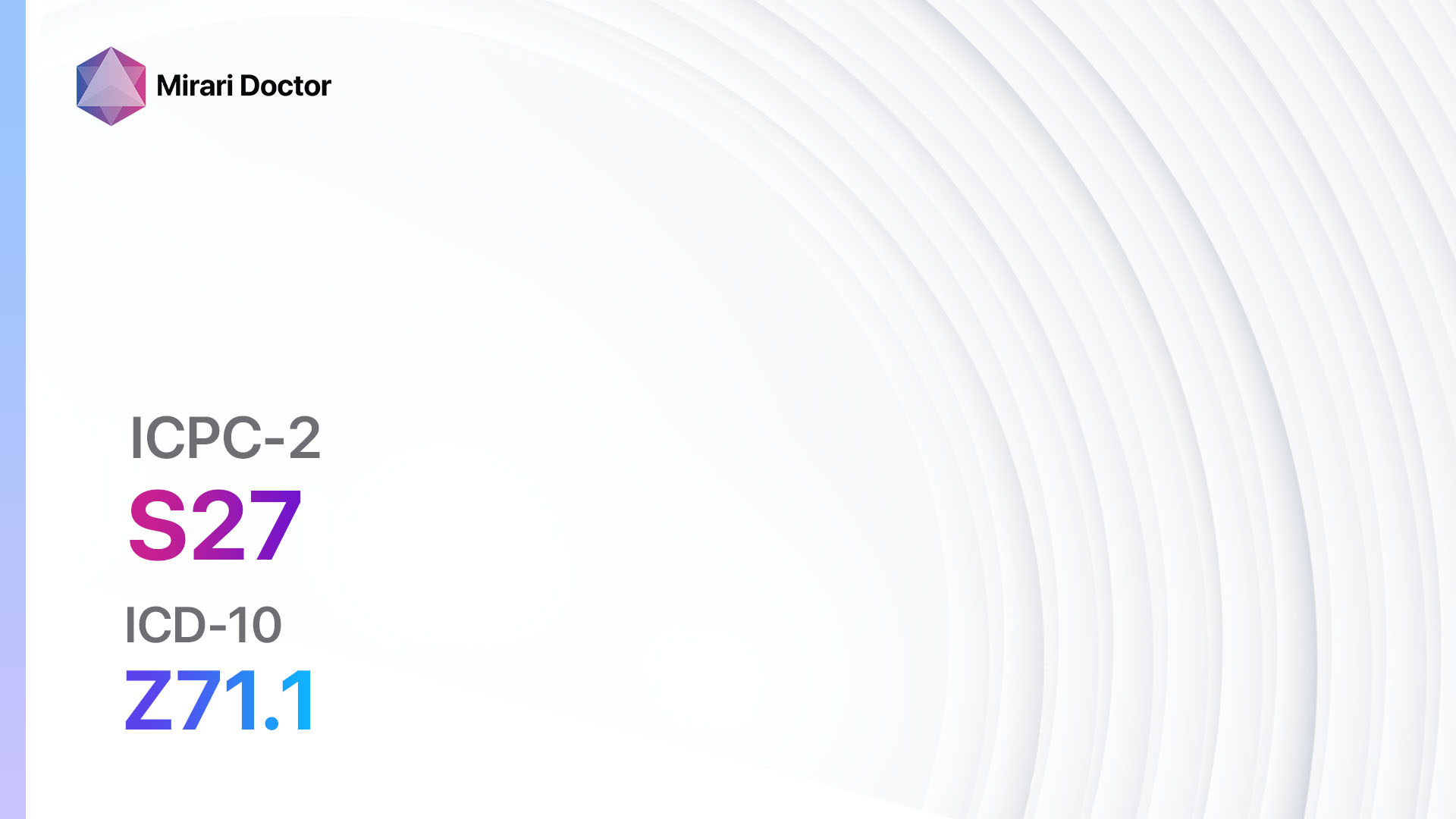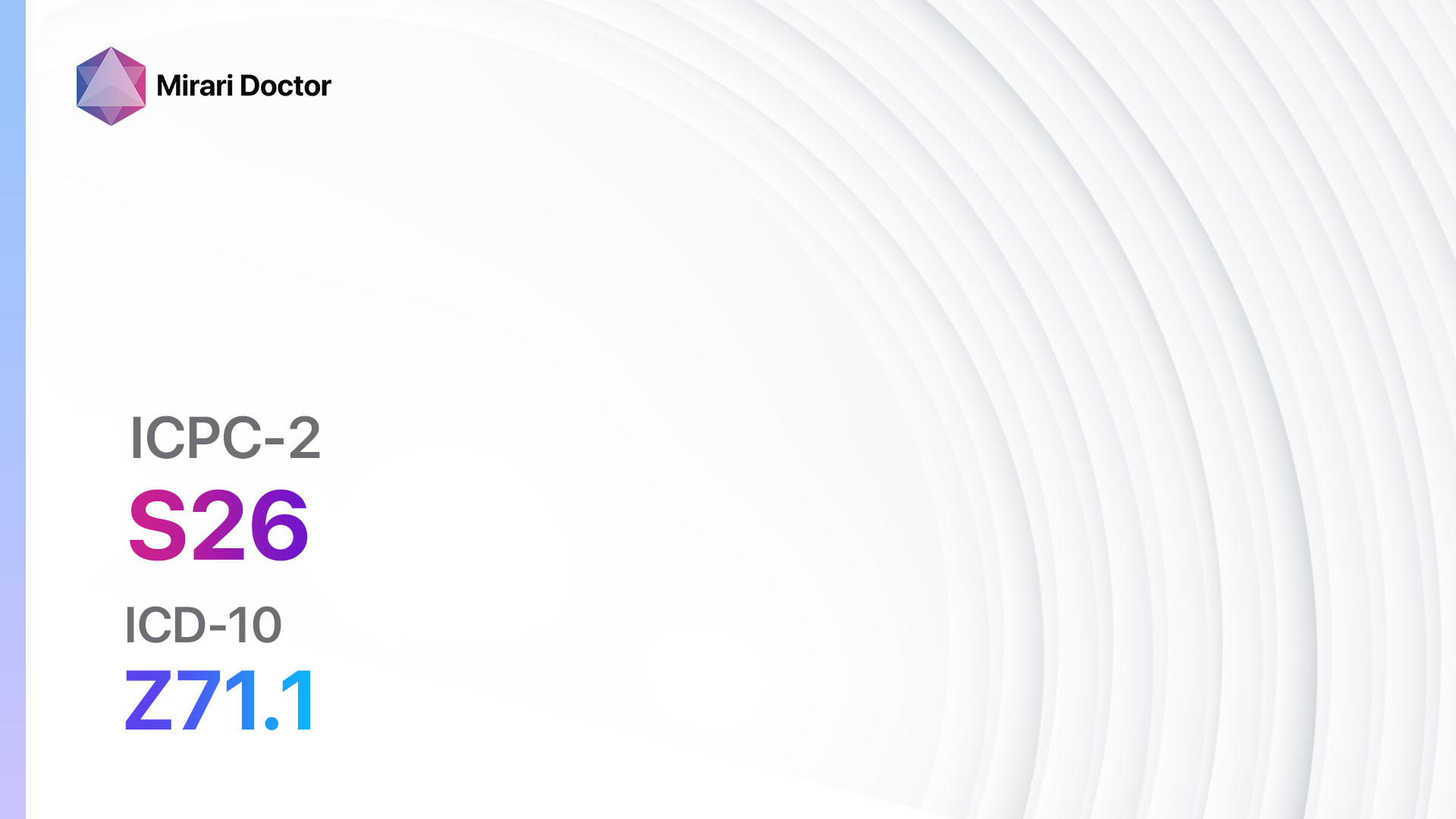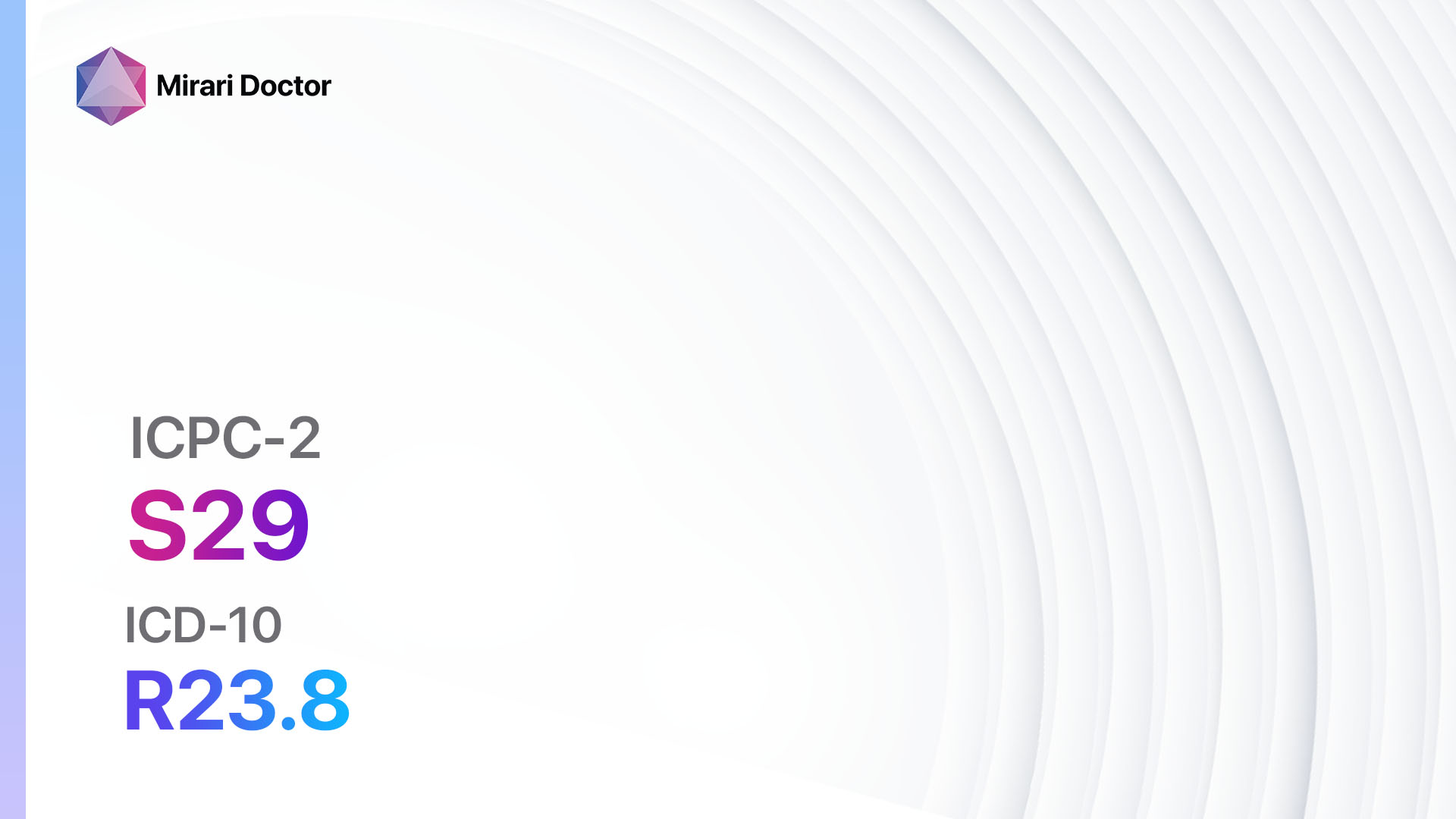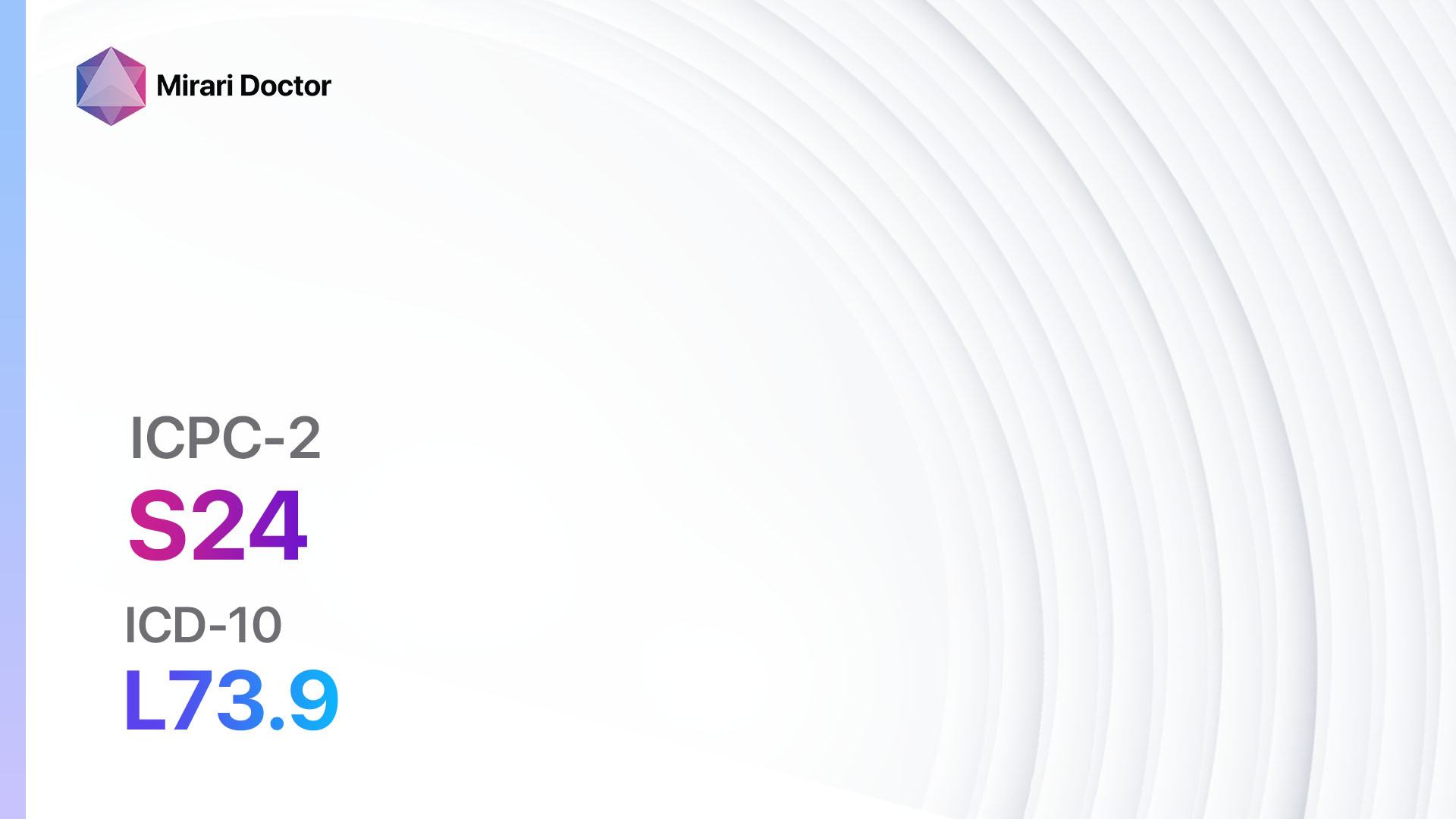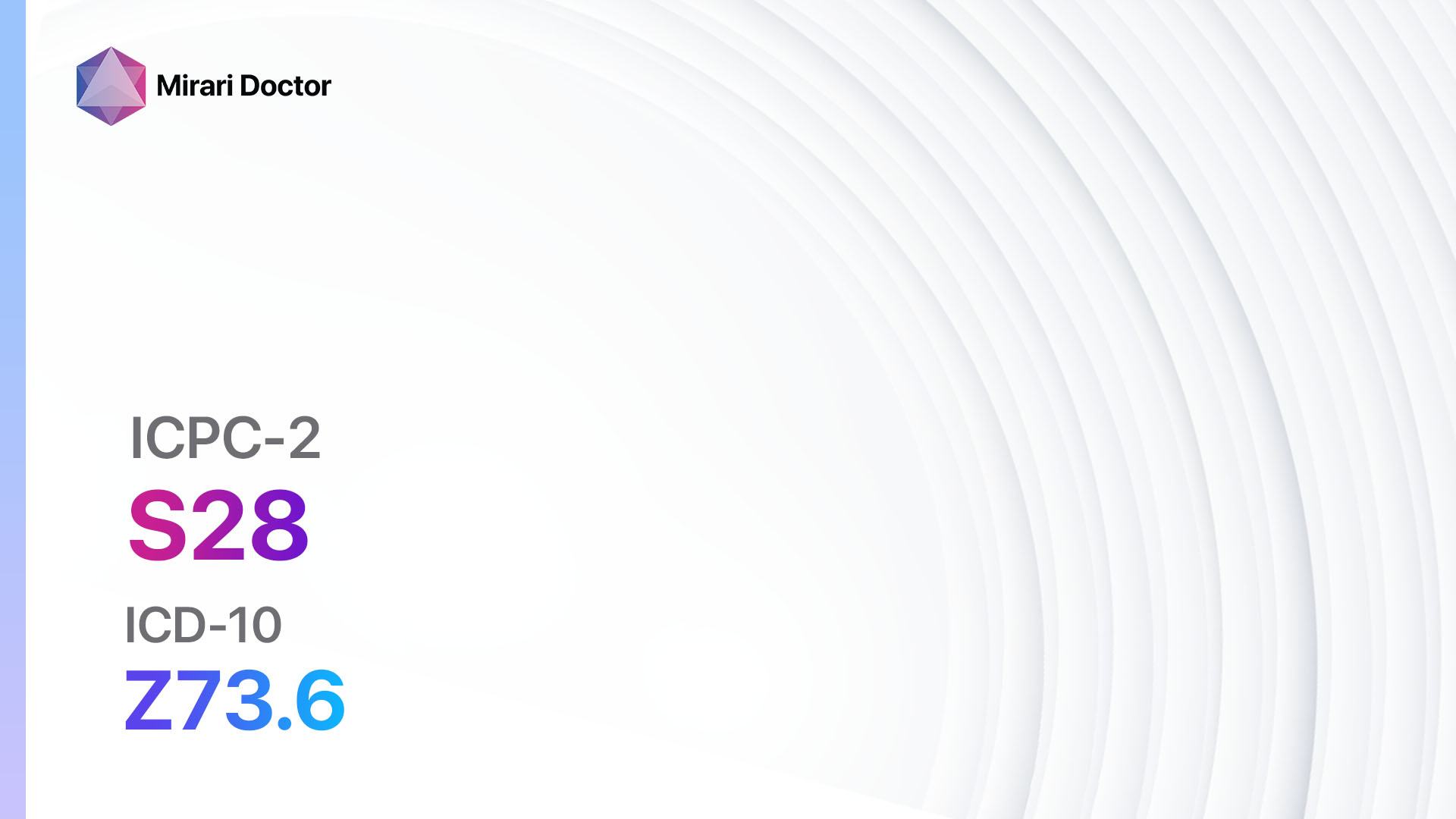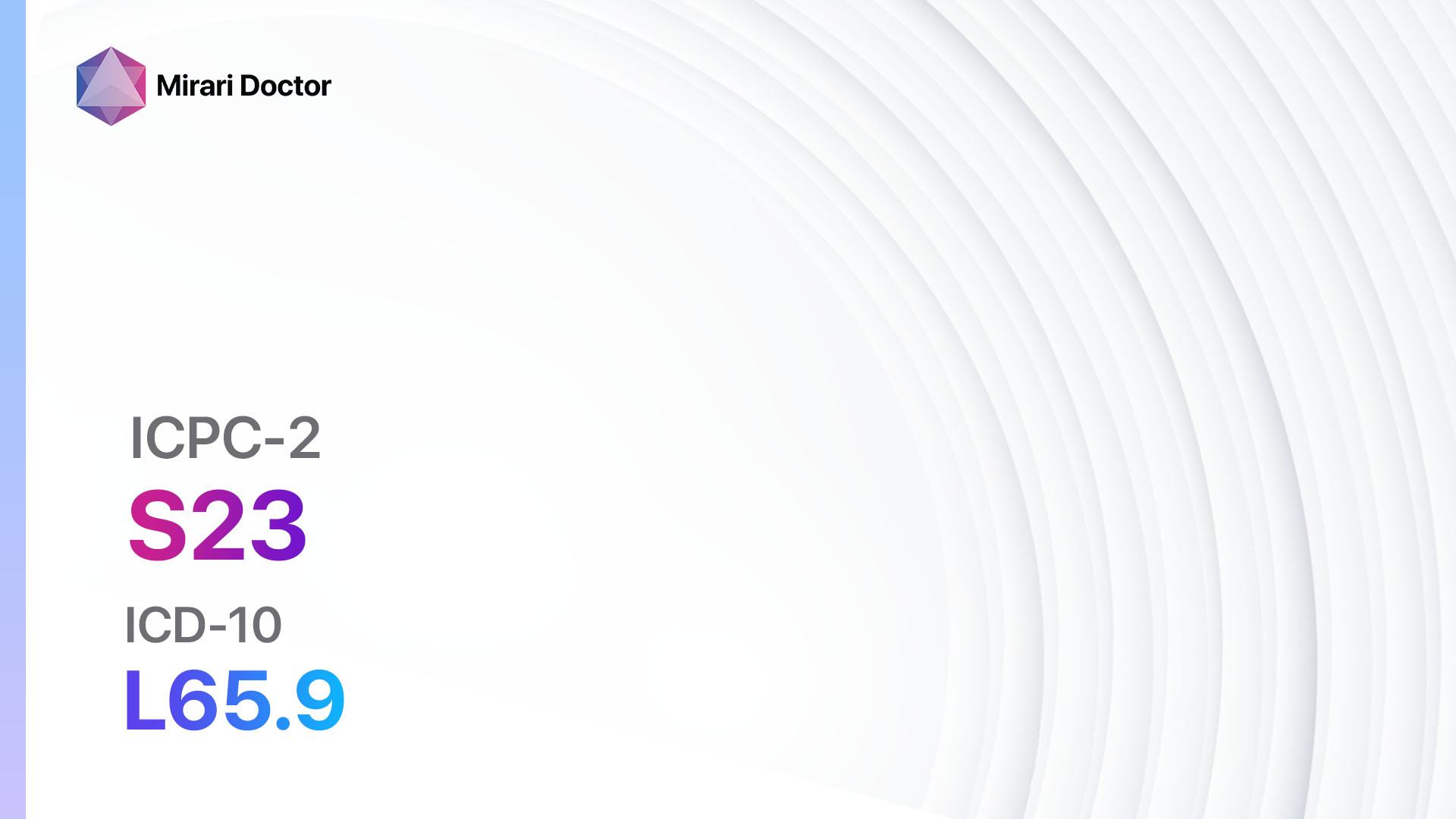
Introduction
Hair loss, also known as baldness or alopecia, is a common condition that affects both men and women[1]. It can have a significant impact on a person’s self-esteem and quality of life[2]. The aim of this guide is to provide healthcare professionals with a comprehensive overview of the diagnosis and management of hair loss.
Codes
Symptoms
- Thinning of hair: Gradual thinning of hair, especially on the top of the head[5].
- Receding hairline: Hairline gradually moves backward, creating an “M” shape[6].
- Patchy or complete hair loss: Hair loss can occur in patches or result in complete baldness[7].
Causes
- Androgenetic alopecia: The most common cause of hair loss, characterized by a genetic predisposition and hormonal factors[8].
- Telogen effluvium: Hair loss due to a significant stressor, such as childbirth, surgery, or emotional stress[9].
- Alopecia areata: An autoimmune condition where the immune system attacks the hair follicles[10].
- Medications: Certain medications, such as chemotherapy drugs, can cause hair loss.
- Medical conditions: Underlying medical conditions, such as thyroid disorders or scalp infections, can contribute to hair loss.
Diagnostic Steps
Medical History
- Gather information about the patient’s family history of hair loss.
- Inquire about any recent stressors or significant life events.
- Ask about the duration and progression of hair loss.
- Assess for any underlying medical conditions or medications that may contribute to hair loss.
Physical Examination
- Examine the scalp for signs of inflammation, infection, or scarring.
- Assess the pattern and extent of hair loss.
- Check for any abnormalities in hair texture or quality.
Determine Severity
- Classify the hair loss based on severity and depth:
- Norwood-Hamilton scale for male pattern baldness.
- Ludwig scale for female pattern baldness.
- Sinclair scale for alopecia areata.
Laboratory Tests
- Complete blood count (CBC): To assess for any underlying medical conditions, such as anemia or thyroid disorders.
- Thyroid function tests: To evaluate thyroid function, as imbalances can contribute to hair loss.
- Iron levels: Low iron levels can lead to hair loss.
- Hormone levels: Testosterone and other hormone levels may be evaluated to rule out hormonal imbalances.
Diagnostic Imaging
- No diagnostic imaging is necessary for the diagnosis of hair loss.
Other Tests
- Scalp biopsy: In some cases, a small sample of the scalp may be taken for further evaluation under a microscope.
Follow-up and Patient Education
- Schedule regular follow-up appointments to monitor the progression of hair loss and assess the effectiveness of interventions.
- Provide patient education on the underlying causes of hair loss and the available treatment options.
Possible Interventions
Traditional Interventions
Medications:
Top 5 drugs for Hair loss/baldness:
- Minoxidil (Rogaine):
- Cost: $10-$40 for a month’s supply.
- Contraindications: Allergy to minoxidil.
- Side effects: Scalp irritation, increased hair shedding initially.
- Severe side effects: Rare, but may include chest pain or rapid heartbeat.
- Drug interactions: None reported.
- Warning: Results may take several months to become noticeable.
- Finasteride (Propecia):
- Cost: $50-$90 for a month’s supply.
- Contraindications: Pregnancy, women of childbearing potential.
- Side effects: Decreased libido, erectile dysfunction.
- Severe side effects: Rare, but may include depression or breast tenderness.
- Drug interactions: None reported.
- Warning: Only approved for use in men.
- Dutasteride (Avodart):
- Cost: $70-$100 for a month’s supply.
- Contraindications: Pregnancy, women of childbearing potential.
- Side effects: Decreased libido, erectile dysfunction.
- Severe side effects: Rare, but may include depression or breast tenderness.
- Drug interactions: None reported.
- Warning: Only approved for use in men.
- Corticosteroids (topical or injectable):
- Cost: Varies depending on the formulation.
- Contraindications: None reported.
- Side effects: Skin thinning, skin discoloration.
- Severe side effects: Rare, but may include allergic reactions or skin infections.
- Drug interactions: None reported.
- Warning: Prolonged use may lead to skin atrophy.
- Anthralin (Dritho-Scalp):
- Cost: $30-$50 for a month’s supply.
- Contraindications: None reported.
- Side effects: Skin irritation, staining of skin and hair.
- Severe side effects: Rare, but may include allergic reactions or skin infections.
- Drug interactions: None reported.
- Warning: Should be used under medical supervision.
Alternative Drugs:
- Biotin (vitamin B7): May help improve hair strength and growth. Cost: $5-$20 for a month’s supply.
- Saw palmetto: Some evidence suggests it may inhibit the enzyme that converts testosterone to dihydrotestosterone (DHT), which is associated with hair loss. Cost: $10-$30 for a month’s supply.
- Laser therapy devices: Low-level laser therapy devices may stimulate hair growth. Cost: $200-$500 for a device.
Surgical Procedures:
- Hair transplant: Involves removing hair follicles from one part of the body (usually the back of the head) and transplanting them to the balding areas. Cost: $4,000-$15,000.
- Scalp reduction: Removes bald scalp and stretches the hair-bearing scalp to cover the bald areas. Cost: $2,000-$10,000.
Alternative Interventions
- Platelet-rich plasma (PRP) therapy: Involves injecting the patient’s own platelet-rich plasma into the scalp to stimulate hair growth. Cost: $500-$2,000 per session.
- Microneedling: Creates tiny punctures in the scalp to stimulate hair growth. Cost: $100-$300 per session.
- Herbal supplements: Some herbs, such as saw palmetto and pumpkin seed oil, may have potential benefits for hair growth. Cost: Varies depending on the specific supplement.
- Scalp massage: Regular scalp massage may improve blood circulation to the hair follicles. Cost: Free or minimal cost.
Lifestyle Interventions
- Healthy diet: Encourage a balanced diet rich in vitamins, minerals, and protein to support hair growth. Cost: Varies depending on food choices.
- Stress management: Help patients identify and manage stressors that may contribute to hair loss. Cost: Varies depending on the chosen stress management techniques.
- Gentle hair care practices: Advise patients to avoid harsh hair treatments and excessive heat styling. Cost: Varies depending on hair care products used.
It is important to note that the cost ranges provided are approximate and may vary depending on the location and availability of the interventions.
Mirari Cold Plasma Alternative Intervention
Understanding Mirari Cold Plasma
- Safe and Non-Invasive Treatment: Mirari Cold Plasma is a safe and non-invasive treatment option for various skin conditions. It does not require incisions, minimizing the risk of scarring, bleeding, or tissue damage.
- Efficient Extraction of Foreign Bodies: Mirari Cold Plasma facilitates the removal of foreign bodies from the skin by degrading and dissociating organic matter, allowing easier access and extraction.
- Pain Reduction and Comfort: Mirari Cold Plasma has a local analgesic effect, providing pain relief during the treatment, making it more comfortable for the patient.
- Reduced Risk of Infection: Mirari Cold Plasma has antimicrobial properties, effectively killing bacteria and reducing the risk of infection.
- Accelerated Healing and Minimal Scarring: Mirari Cold Plasma stimulates wound healing and tissue regeneration, reducing healing time and minimizing the formation of scars.
Mirari Cold Plasma Prescription
Video instructions for using Mirari Cold Plasma Device – S23 Hair loss/baldness (ICD-10:L65.9)
| Mild | Moderate | Severe |
| Mode setting: 1 (Infection) Location: 0 (Localized) Morning: 15 minutes, Evening: 15 minutes |
Mode setting: 1 (Infection) Location: 0 (Localized) Morning: 30 minutes, Lunch: 30 minutes, Evening: 30 minutes |
Mode setting: 1 (Infection) Location: 0 (Localized) Morning: 30 minutes, Lunch: 30 minutes, Evening: 30 minutes |
| Mode setting: 2 (Wound Healing) Location: 0 (Localized) Morning: 15 minutes, Evening: 15 minutes |
Mode setting: 2 (Wound Healing) Location: 0 (Localized) Morning: 30 minutes, Lunch: 30 minutes, Evening: 30 minutes |
Mode setting: 2 (Wound Healing) Location: 0 (Localized) Morning: 30 minutes, Lunch: 30 minutes, Evening: 30 minutes |
| Mode setting: 3 (Antiviral Therapy) Location: 0 (Localized) Morning: 15 minutes, Evening: 15 minutes |
Mode setting: 3 (Antiviral Therapy) Location: 0 (Localized) Morning: 30 minutes, Lunch: 30 minutes, Evening: 30 minutes |
Mode setting: 3 (Antiviral Therapy) Location: 0 (Localized) Morning: 30 minutes, Lunch: 30 minutes, Evening: 30 minutes |
| Total Morning: 45 minutes approx. $7.50 USD, Evening: 45 minutes approx. $7.50 USD |
Total Morning: 90 minutes approx. $15 USD, Lunch: 90 minutes approx. $15 USD, Evening: 90 minutes approx. $15 USD |
Total Morning: 90 minutes approx. $15 USD, Lunch: 90 minutes approx. $15 USD, Evening: 90 minutes approx. $15 USD |
| Usual treatment for 7-60 days approx. $105 USD – $900 USD | Usual treatment for 6-8 weeks approx. $1,890 USD – $2,520 USD |
Usual treatment for 3-6 months approx. $4,050 USD – $8,100 USD
|
 |
|
Use the Mirari Cold Plasma device to treat Hair loss/baldness effectively.
WARNING: MIRARI COLD PLASMA IS DESIGNED FOR THE HUMAN BODY WITHOUT ANY ARTIFICIAL OR THIRD PARTY PRODUCTS. USE OF OTHER PRODUCTS IN COMBINATION WITH MIRARI COLD PLASMA MAY CAUSE UNPREDICTABLE EFFECTS, HARM OR INJURY. PLEASE CONSULT A MEDICAL PROFESSIONAL BEFORE COMBINING ANY OTHER PRODUCTS WITH USE OF MIRARI.
Step 1: Cleanse the Skin
- Start by cleaning the affected area of the skin with a gentle cleanser or mild soap and water. Gently pat the area dry with a clean towel.
Step 2: Prepare the Mirari Cold Plasma device
- Ensure that the Mirari Cold Plasma device is fully charged or has fresh batteries as per the manufacturer’s instructions. Make sure the device is clean and in good working condition.
- Switch on the Mirari device using the power button or by following the specific instructions provided with the device.
- Some Mirari devices may have adjustable settings for intensity or treatment duration. Follow the manufacturer’s instructions to select the appropriate settings based on your needs and the recommended guidelines.
Step 3: Apply the Device
- Place the Mirari device in direct contact with the affected area of the skin. Gently glide or hold the device over the skin surface, ensuring even coverage of the area experiencing.
- Slowly move the Mirari device in a circular motion or follow a specific pattern as indicated in the user manual. This helps ensure thorough treatment coverage.
Step 4: Monitor and Assess:
- Keep track of your progress and evaluate the effectiveness of the Mirari device in managing your Hair loss/baldness. If you have any concerns or notice any adverse reactions, consult with your health care professional.
Note
This guide is for informational purposes only and should not replace the advice of a medical professional. Always consult with your healthcare provider or a qualified medical professional for personal advice, diagnosis, or treatment. Do not solely rely on the information presented here for decisions about your health. Use of this information is at your own risk. The authors of this guide, nor any associated entities or platforms, are not responsible for any potential adverse effects or outcomes based on the content.
Mirari Cold Plasma System Disclaimer
- Purpose: The Mirari Cold Plasma System is a Class 2 medical device designed for use by trained healthcare professionals. It is registered for use in Thailand and Vietnam. It is not intended for use outside of these locations.
- Informational Use: The content and information provided with the device are for educational and informational purposes only. They are not a substitute for professional medical advice or care.
- Variable Outcomes: While the device is approved for specific uses, individual outcomes can differ. We do not assert or guarantee specific medical outcomes.
- Consultation: Prior to utilizing the device or making decisions based on its content, it is essential to consult with a Certified Mirari Tele-Therapist and your medical healthcare provider regarding specific protocols.
- Liability: By using this device, users are acknowledging and accepting all potential risks. Neither the manufacturer nor the distributor will be held accountable for any adverse reactions, injuries, or damages stemming from its use.
- Geographical Availability: This device has received approval for designated purposes by the Thai and Vietnam FDA. As of now, outside of Thailand and Vietnam, the Mirari Cold Plasma System is not available for purchase or use.
References
- Piraccini, B. M., & Alessandrini, A. (2014). Androgenetic alopecia. Giornale Italiano di Dermatologia e Venereologia, 149(1), 15-24.
- Cash, T. F. (1992). The psychological effects of androgenetic alopecia in men. Journal of the American Academy of Dermatology, 26(6), 926-931.
- WONCA International Classification Committee. (1998). ICPC-2: International Classification of Primary Care. Oxford University Press, USA.
- World Health Organization. (2019). International Statistical Classification of Diseases and Related Health Problems (11th ed.).
- Sinclair, R. (2015). Male pattern androgenetic alopecia. BMJ, 351, h4297.
- Gupta, M., & Mysore, V. (2016). Classifications of patterned hair loss: a review. Journal of Cutaneous and Aesthetic Surgery, 9(1), 3.
- Pratt, C. H., King, L. E., Messenger, A. G., Christiano, A. M., & Sundberg, J. P. (2017). Alopecia areata. Nature Reviews Disease Primers, 3(1), 1-17.
- Lolli, F., Pallotti, F., Rossi, A., Fortuna, M. C., Caro, G., Lenzi, A., … & Lombardo, F. (2017). Androgenetic alopecia: a review. Endocrine, 57(1), 9-17.
- Malkud, S. (2015). Telogen effluvium: a review. Journal of Clinical and Diagnostic Research: JCDR, 9(9), WE01.
- Gilhar, A., Etzioni, A., & Paus, R. (2012). Alopecia areata. New England Journal of Medicine, 366(16), 1515-1525.
Related articles
Made in USA


